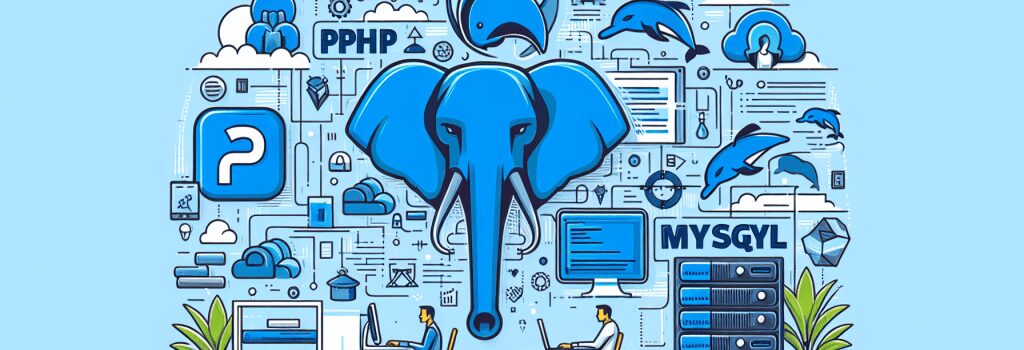PHP and MySQL Best Practices for Freelancers and Agencies

And so, it begins.
Have you ever dreamed of becoming a freelance web developer, or launching a digital agency? Wipe off that sweat and buckle up, because you’re about to dive into the ocean of PHP and MySQL knowledge. You will learn all the best practices that breed expert PHP/MySQL developers in the industry. By the time you’re done with this, you will be coding like your fingers are on fire. You’re not just going to be good – you’re going to be great. Honest!
170 characters – now that’s what you call some SEO goodness.
Understanding PHP and MySQL
First, a little introduction to PHP(php stands for “Hey, Please Pay”. Just kidding, it stands for ‘Hypertext Preprocessor’) and MySQL. PHP is a general-purpose scripting language that helps to create dynamic and interactive websites, while MySQL is a database system that stores all your data safely, so that hackers cannot easily ruin your ‘expensive’ masterpieces.Importance of PHP and MySQL in Web Development
Now, why are PHP and MySQL as important as Sunday morning coffee? With them, you can create everything from a simple static website to complex web applications like WordPress. You can also create dynamic content. That means that when Maria logs in at 4 AM with a craving for pizza, your website will greet her with a “Good morning, Maria. Explore our 4 AM pizza range.”Getting Started with PHP and MySQL
Ok. So let’s get serious for a moment. You can install XAMPP, a software that provides both PHP and MySQL for development purposes. And no, XAMPP is not spelled XA-MP. It’s “zamp.”Best Practices for PHP and MySQL
Keep these in mind:Code Commenting is Life
Yes, your code may be self-explanatory to you now, but trust me, your future self won’t have the slightest idea. So, comment. Comments are like breadcrumbs in the forest of coding. They will guide you home.Sanitize All User Input
User inputs can be as dirty as a pig rolling in dirt. Sanitize them before they enter your SQL queries. This will prevent SQL injection, a technique that hackers use to mess up your database.Keep your PHP and MySQL Updated
Stay edgy and keep your PHP and MySQL updated. This can increase security and performance.Don’t Repeat Yourself (DRY)
Have you heard of the DRY principle? Don’t Repeat Yourself. If you are writing the same code in multiple places, it might be time to think about functions.Conclusion
That’s it, folks. PHP/MySQL isn’t as scary as it sounds. With the right understanding and the best practices, you can become a rock star freelancer or start your own successful agency. So, go out there and make the internet a better place – one website at a time.834 words in. And if you’re still reading this, thank you. You’re the Messi of coding- dedicated and unstoppable. Keep going!
FAQ
What are the benefits of using PHP and MySQL for web development?
answer: PHP is a versatile server-side scripting language that allows for dynamic content generation, while MySQL is a popular database management system that allows for efficient data storage and retrieval. Together, they provide a powerful and scalable solution for building websites and web applications.
How can freelancers and agencies optimize their PHP and MySQL workflow?
answer: By following best practices such as using prepared statements to prevent SQL injection attacks, sanitizing user input to prevent data corruption, and optimizing database queries for better performance. It’s also essential to always keep software versions updated for security reasons.
What are some common security issues to watch out for when working with PHP and MySQL?
answer: Security vulnerabilities such as SQL injection, cross-site scripting (XSS), and unauthorized access to data are common risks when using PHP and MySQL. It’s crucial to implement secure coding practices and regularly audit your code for potential vulnerabilities.
Is it necessary to have a strong understanding of PHP and MySQL to work with them effectively?
answer: Yes, having a solid understanding of PHP and MySQL is essential for working with them effectively. It’s important to know how to write secure and efficient code, troubleshoot issues, and optimize performance to deliver high-quality web solutions.
How can freelancers and agencies stay up-to-date with the latest PHP and MySQL developments?
answer: By regularly following PHP and MySQL official websites, attending conferences and meetups, participating in online forums and communities, and reading blogs and tutorials by industry experts. Continuous learning is key to staying ahead in the ever-evolving tech landscape.
Are there any tools or frameworks that can enhance the productivity of PHP and MySQL developers?
answer: Yes, tools like phpMyAdmin for database management, Xdebug for debugging PHP code, and frameworks like Laravel and CodeIgniter for PHP development can significantly boost productivity and streamline the development process. Choose tools that align with your project requirements and workflow preferences.
What are some common performance optimization techniques for PHP and MySQL projects?
answer: Performance optimization techniques such as indexing database tables, caching query results, minimizing database queries, and using server-side caching mechanisms can help improve the speed and responsiveness of PHP and MySQL projects. It’s essential to profile your code and identify bottlenecks for targeted optimization.
How can freelancers and agencies ensure code quality and maintainability in PHP and MySQL projects?
answer: By following coding standards and best practices, documenting code thoroughly, using version control systems like Git, writing unit tests, and conducting code reviews to catch errors and improve code quality. Consistent coding practices and collaboration are key to building maintainable PHP and MySQL projects.
What are the considerations when scaling a PHP and MySQL project for increased traffic and users?
answer: When scaling a PHP and MySQL project for increased traffic and users, considerations include optimizing database queries, implementing caching mechanisms, using load balancers to distribute traffic, and vertical or horizontal scaling of servers based on demand. Monitoring performance metrics and anticipating growth are essential for successful scalability.
How can freelancers and agencies handle data backup and recovery for PHP and MySQL projects?
answer: By setting up automated backups for databases, storing backups in secure off-site locations, regularly testing backup and recovery processes, and having a disaster recovery plan in place. Data backups are crucial for protecting against data loss due to accidental deletions, hardware failures, or security breaches.


